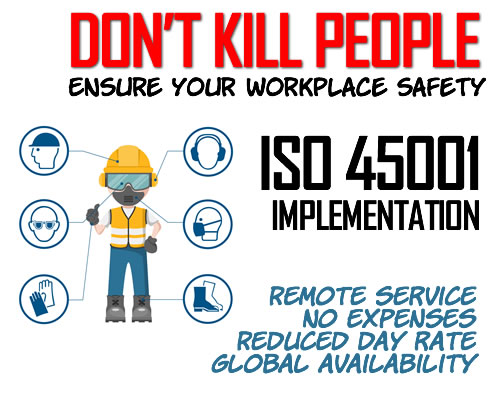 Feedback from frustrated prime contractors and other stakeholders during the early 2000’s led to a push against the practice by Certification Bodies (CBs) of “soft grading” nonconformities. This is where an auditor finds a nonconformity of a certain severity, but intentionally downgrades it to either keep the client happy, or out of fear of losing the contract. Major nonconformities become minors, and minor nonconformities become opportunities for improvement (OFIs) or are not written up at all.
Feedback from frustrated prime contractors and other stakeholders during the early 2000’s led to a push against the practice by Certification Bodies (CBs) of “soft grading” nonconformities. This is where an auditor finds a nonconformity of a certain severity, but intentionally downgrades it to either keep the client happy, or out of fear of losing the contract. Major nonconformities become minors, and minor nonconformities become opportunities for improvement (OFIs) or are not written up at all.
Responding to mandates from the International Accreditation Forum (IAF) in 2005, ANAB, UKAS and the world’s other accreditation bodies promised a push against soft-grading, and in fact have incorporated additional steps in their oversight audits of CBs to identify them. As part of their opening meeting spiel, CB auditors reported to clients that they would have to “get tough” and apply strict guidelines when classifying nonconformities. And during ANAB witness audits, CB auditors did just this.
But ANAB can’t witness every audit. They can’t even audit a tiny fraction. So the reality is that CB auditors apply a far more strict adherence to the rules “when the parents are in the room” vs. when they have no oversight. ANAB knows this, but what can they do?
Schrödinger’s Nonconformance
During a recent, massive audit (5 man-weeks) I was involved in for a client, the CB audit team raised a series of concerns which, they said, may be elevated to “major nonconformance” status. In this case, the findings were in fact bogus: there was no objective evidence, and the severity was purely the result of the auditors’ misguided opinions. I asked the auditors to provide evidence and to write the findings in a way that was devoid of any subjective text. When they couldn’t, they downgraded the findings.
What was surprising, however, was that they didn’t reduce these “major nonconformities” to either minors or OFIs, which I would have accepted. They dropped them into oblivion. Suddenly, the issues that were so severe they threatened the very certification of my client had disappeared entirely, not even reduced to a note or “observation.” Now I may be a good negotiator, but I’m not that good. I shouldn’t be able to turn wine into water.
From the standpoint of the final audit report, these are “quantum” findings — they change state when you observe them, in this case going invisible. Weird.
Kruger’s Industrial Smoothing of Findings

In another recent audit, for a different client, I saw a similar down-grading that had me baffled for different reasons. The auditor discovered a very serious finding that had been missed by internal audits (including ones performed by me.) It was one of those moments when you really appreciate the third-party audit scheme, because that “other set of eyes” finds things you just didn’t catch. It was a problem that was linked to some tiny print in a contract, easily overlooked but if it had not been found, may have led to the 2nd worst possible outcome: a lawsuit. (The 1st worst outcome is personal injury, of course.)
We were all extremely grateful that the auditor had found it. But when he wrote it up, it was classified as a minor nonconformity. Because the language in the contract was so minuscule compared to the bulk of the surrounding terms, perhaps that led him to think it wasn’t important. For me, however, it clearly met the definition of a major nonconformity, one we could have fixed quickly (and did) but severe nevertheless.
The Customer is Always Right, Even If They’re Totally Junked Up
In both cases, it appeared that the auditors were more concerned with maintaining either their own standing with their internal CB review committees or in maintaining their relationship with the client. It’s not just the CB as an organization that doesn’t like losing clients, eventually it is the individual auditor who relies on the client for his bread and butter. In the first example, the auditors openly discussed how they may have ranked the findings more severely had “ANAB been in the room.”
 There’s no clear answer for how to handle soft-grading. So long as clients pay registrars, and CBs pay accreditation bodies, no amount of policing will fix the system. Free market capitalism will win every time, and those CBs that truly “get tough” with clients will inevitably lose some portion of their market share to the hacks who “go easy.” It’s a conundrum.
There’s no clear answer for how to handle soft-grading. So long as clients pay registrars, and CBs pay accreditation bodies, no amount of policing will fix the system. Free market capitalism will win every time, and those CBs that truly “get tough” with clients will inevitably lose some portion of their market share to the hacks who “go easy.” It’s a conundrum.
Eventually, it’s up to the Accreditation Bodies, but they have as much skin in the game as the CBs, if not more. A CB can lose a client and still have dozens, if not hundreds, more to dilute the effect. Each Accreditation Body, however, only has a handful of the pool of CBs a clients, some of which are huge, and if they lose one it’s a massive chunk of their business lost.
The best solution for all of this would be an IAF-centralized auditing program where AB money was pooled and distributed based on a licensing scheme. But I have no illusions that this would be feasibly implemented, or even possible under the current scheme. Plus, someone would just scream “Marxist!” or something.
Until then, we’re stuck. So enjoy your soft-grade nonconformities, folks. They aren’t going anywhere soon, no matter how much bluster you hear.
Christopher Paris is the founder and VP Operations of Oxebridge. He has over 35 years’ experience implementing ISO 9001 and AS9100 systems, and helps establish certification and accreditation bodies with the ISO 17000 series. He is a vocal advocate for the development and use of standards from the point of view of actual users. He is the writer and artist of THE AUDITOR comic strip, and is currently writing the DR. CUBA pulp novel series. Visit www.drcuba.world








